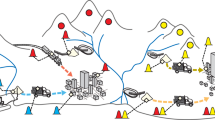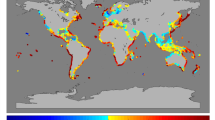Abstract
As explained in my note on p. 245, I had not the advantage of perusing Mr. Waller's paper on “Sand.” Mr. Gardner, in his notice of it gave the first place to “distinguishing with certainty by the aid of the microscope sand that has been worn by the action of wind from sand that has been for long exposed to surf, and this again from sand brought down from torrents.” I assumed this was its primary object. In this I am in error. Mr. Waller says his “paper was to show that chalk flints had scarcely any place in the formation of sand.” Had I known this was the purpose of his writing I would not have troubled you with any remarks, as I entirely agree with Mr. Gardner when he says, as in p. 225: “The coast-line occupied by flint shingle is almost limited to portions of Western Europe, and is relatively insignificant.”
This is a preview of subscription content, access via your institution
Access options
Subscribe to this journal
Receive 51 print issues and online access
$199.00 per year
only $3.90 per issue
Buy this article
- Purchase on SpringerLink
- Instant access to full article PDF
Prices may be subject to local taxes which are calculated during checkout
Similar content being viewed by others
Rights and permissions
About this article
Cite this article
MELVIN, J. Sand. Nature 28, 344 (1883). https://doi.org/10.1038/028344c0
Issue date:
DOI: https://doi.org/10.1038/028344c0



